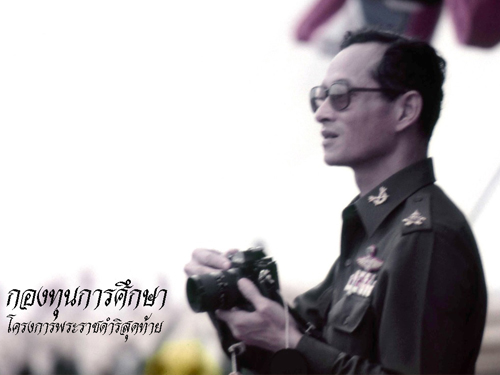ชื่อเรื่อง การพัฒนารูปแบบการเรียนการสอนวิทยาศาสตร์ตามแนวทฤษฎีการสร้างความรู้
เพื่อส่งเสริมความสามารถในการคิดวิเคราะห์ เรื่อง วัสดุและสสาร กลุ่มสาระการเรียนรู้วิทยาศาสตร์และเทคโนโลยีสำหรับนักเรียนชั้นประถมศึกษาปีที่ 4
ผู้วิจัย มนัสณัญย์ โงชาฤทธิ์
ปีที่วิจัย 2565-2566
บทคัดย่อ
การวิจัยครั้งนี้เป็นการวิจัยและพัฒนามีวัตถุประสงค์เพื่อ 1) ศึกษาสภาพปัจจุบัน สภาพที่ พึงประสงค์ ความต้องการจำเป็น รูปแบบการเรียนการสอนวิทยาศาสตร์ตามแนวทฤษฎีการสร้างความรู้เพื่อส่งเสริมความสามารถในการคิดวิเคราะห์ 2) ออกแบบและพัฒนารูปแบบการเรียนการสอนวิทยาศาสตร์ตามแนวทฤษฎีการสร้างความรู้เพื่อส่งเสริมความสามารถในการคิดวิเคราะห์ 3) ทดลองใช้รูปแบบการเรียนการสอนวิทยาศาสตร์ตามแนวทฤษฎีการสร้างความรู้เพื่อส่งเสริมความสามารถในการคิดวิเคราะห์ 4) ประเมินและรับรองรูปแบบการเรียนการสอนวิทยาศาสตร์ตามแนวทฤษฎีการสร้างความรู้เพื่อส่งเสริมความสามารถในการคิดวิเคราะห์ เรื่อง วัสดุและสสาร กลุ่มสาระการเรียนรู้วิทยาศาสตร์และเทคโนโลยีสำหรับนักเรียนชั้นประถมศึกษาปีที่ 4 การวิจัยแบ่งออกเป็น 4 ระยะ ดังนี้ ระยะที่ 1 ศึกษาสภาพปัจจุบัน สภาพที่พึงประสงค์ ความต้องการจำเป็น ระยะที่ 2 การออกแบบและการพัฒนารูปแบบ ระยะที่ 3 การนำรูปแบบไปทดลองใช้ ระยะที่ 4 การประเมินและรับรองรูปแบบ กลุ่มตัวอย่างที่ใช้ในการทดลองใช้รูปแบบ ได้แก่ นักเรียนชั้นประถมศึกษาปีที่ 4/7 จำนวน 35 คน ที่กำลังศึกษาในภาคเรียนที่ 2 ปีการศึกษา 2566 โรงเรียนเทศบาลสวนสนุก สังกัดสำนักการศึกษา เทศบาลนครขอนแก่น กรมส่งเสริมการปกครองท้องถิ่น กระทรวงมหาดไทย ซึ่งได้มา โดยการสุ่มตัวอย่างแบบกลุ่ม (Cluster Random Sampling) โดยใช้แบบแผนการทดลองแบบกลุ่มเดียวที่ใช้การวัดก่อนและหลังการใช้รูปแบบ (One Group Pretest-Postest Design) เครื่องมือที่ใช้ในการวิจัย ได้แก่ 1) แบบสอบถามการศึกษาสภาพปัจจุบัน สภาพที่พึงประสงค์ ความต้องการจำเป็น จำนวน 1 ฉบับ 2) แบบสัมภาษณ์แบบกึ่งโครงสร้าง จำนวน 1 ฉบับ 3) แผนการจัดการเรียนรู้ จำนวน 10 แผน 4) คู่มือการใช้รูปแบบ 5) แบบทดสอบวัดผลสัมฤทธิ์ทางการเรียน แบบเลือกตอบ 4 ตัวเลือก จำนวน 30 ข้อ 6) แบบวัดการคิดวิเคราะห์ แบบเลือกตอบ 4 ตัวเลือก จำนวน 20 ข้อ 7) แบบสอบถามความพึงพอใจ จำนวน 20 ข้อ
ผลการวิจัย พบว่า
1. ศึกษาสภาพปัจจุบัน สภาพที่พึงประสงค์ ความต้องการจำเป็น รูปแบบการเรียนการสอนวิทยาศาสตร์ตามแนวทฤษฎีการสร้างความรู้เพื่อส่งเสริมความสามารถในการคิดวิเคราะห์ พบว่า สภาพปัจจุบัน โดยรวมอยู่ในระดับปานกลาง ( = 3.41 ,  = 0.78) และสภาพที่พึงประสงค์ โดยรวมอยู่ในระดับมากที่สุด ( = 4.65,  = 0.48)
2. ผลการออกแบบและพัฒนารูปแบบการเรียนการสอนวิทยาศาสตร์ตามแนวทฤษฎีการสร้างความรู้เพื่อส่งเสริมความสามารถในการคิดวิเคราะห์ ประกอบด้วย 1) หลักการ (Principles) 2) วัตถุประสงค์ (Objectives) 3) การจัดการเรียนการสอน (Teaching Process) ขั้นตอน 7 ขั้นตอน และ 4) การวัดและประเมินผล (Evaluation) ได้รูปแบบ EPACIEF Model คือ
ขั้นที่ 1 ขั้นสร้างความสนใจ (Engagement : E)
ขั้นที่ 2 ขั้นวางแผน (Plan : P)
ขั้นที่ 3 ขั้นลงมือกระทำ (Action : A)
ขั้นที่ 4 ขั้นสร้างองค์ความรู้ (Construction : C)
ขั้นที่ 5 ขั้นนำไปใช้ (Implement)
ขั้นที่ 6 ขั้นวัดและประเมินผล (Evaluation : E)
ขั้นที่ 7 ขั้นสะท้อนผล (Feedback : F)
3. ผลการทดลองใช้รูปแบบการเรียนการสอนวิทยาศาสตร์ตามแนวทฤษฎีการสร้างความรู้เพื่อส่งเสริมความสามารถในการคิดวิเคราะห์
3.1 ประสิทธิภาพของรูปแบบการเรียนการสอนวิทยาศาสตร์ตามแนวทฤษฎีการสร้างความรู้เพื่อส่งเสริมความสามารถในการคิดวิเคราะห์ เท่ากับ 82.12/81.33
3.2 ค่าดัชนีประสิทธิผลของรูปแบบการเรียนการสอนวิทยาศาสตร์ตามแนว ทฤษฎีการสร้างความรู้เพื่อส่งเสริมความสามารถในการคิดวิเคราะห์ เท่ากับ 0.7364
3.3 ความสามารถในการคิดวิเคราะห์ของนักเรียนที่เรียนโดยใช้รูปแบบหลังเรียนสูงกว่าก่อนเรียนอย่างมีนัยสำคัญทางสถิติที่ระดับ .05
3.4 ผลสัมฤทธิ์ทางการเรียนของนักเรียนที่เรียนโดยใช้รูปแบบหลังเรียนสูงกว่าก่อนเรียนอย่างมีนัยสำคัญทางสถิติที่ระดับ .05
3.5 ความพึงพอใจของนักเรียน พบว่าโดยรวมนักเรียนมีความพึงพอใจในระดับมากที่สุด ( =4.66, S.D.=0.48)
4. ผลการประเมินและรับรองรูปแบบการเรียนการสอนวิทยาศาสตร์ตามแนวทฤษฎีการสร้างความรู้เพื่อส่งเสริมความสามารถในการคิดวิเคราะห์ มีความเหมาะสมอยู่ในระดับมากที่สุด ( =4.65,  =0.51)
Title: Development of a science teaching model based on knowledge creation theory. To promote the ability to think analytically about materials and matter, science and technology learning subject group for 4th grade students.
Researcher: Mrs. Manatsanan Ngocharit
Year: 2022-2023
Abstract
This research is research and development with the objectives to 1) study the current condition. Desired condition necessity Science teaching model according to knowledge creation theory to promote analytical thinking ability 2) Design and develop a science teaching model according to knowledge creation theory to promote analytical thinking ability 3 ) Experiment with the science teaching model according to the theory of knowledge creation to promote analytical thinking ability. 4) Evaluate and certify the science teaching model according to the theory of knowledge creation to promote the ability to think. Think analytically about materials and matter, science and technology learning subject group for Grade 4 students. The research is divided into 4 phases as follows: Phase 1: Study the current condition. Desired condition Necessary needs. Phase 2: Model design and development. Phase 3: Testing of the model. Phase 4: Evaluation and certification of the model. The sample group used in the trial of the model includes 35 students in Grade 4/7 who are studying in the second semester of the academic year 2023 at Suan Sanook Municipal School. Under the Office of Education Khon Kaen Municipality Department of Local Administration Promotion Ministry of Interior, which was obtained by random sampling (Cluster Random Sampling) using a single group experimental design that uses measurement before and after using the model (One Group Pretest-Postest Design). The tools used in the research include: 1 ) Satisfaction questionnaire study the current condition Desired condition Necessary needs, 1 copy 2) Semi-structured interview form, 1 copy 3) Learning management plans, 12 plans 4) Format usage manual 5) Academic achievement test, 4-choice answer format, 30 questions 6 ) Analytical thinking test, 4-choice answer model, 20 questions. 7) Satisfaction questionnaire, 20 questions.
The research results found that
1. Study the current condition Desired condition and Priority needs. The science teaching model according to the theory of knowledge creation to promote analytical thinking ability. The results found that the overall current condition was at a moderate level ( = 3.41,  = 0.78) and a desirable condition. Overall it was at the highest level ( = 4.65, = 0.48).
2. The results of designing and developing a science teaching model according to the theory of knowledge creation to promote analytical thinking ability, consisting of 1) Principles (Principles) 2) Objectives (Objectives) 3) Teaching and learning organization (Teaching Process) 7 steps and 4) measurement and evaluation (Evaluation) in the form of the EPACIEF Model:
Step 1: Create interest (Engagement: E)
Step 2: Planning step (Plan : P)
Step 3: Action step (Action : A)
Step 4: Knowledge creation step (Construction : C)
Step 5: Implementation step
Step 6: Measurement and evaluation step (Evaluation : E)
Step 7, reflection step (Feedback : F)
3. Results of the experiment using the science teaching model according to the theory of knowledge creation to promote analytical thinking ability were.
3.1 The efficiency of the science teaching model according to the knowledge creation theory to promote analytical thinking ability is 82.12/81.33.
3.2 The effectiveness index of the science teaching model according to Theory of knowledge creation to promote analytical thinking ability is equal to 0.7364.
3.3 The post analytical thinking ability of students test was higher than before, with statistical significance at the .05 level.
3.4 The academic achievement of students was higher than before, with statistical significance at the .05 level.
3.5 Student satisfaction, it was found that overall students were satisfied at the highest level ( =4.66, S.D.=0.48)
4. Results of the evaluation and certification of the science teaching model according to the knowledge creation theory to promote analytical thinking ability was appropriate at the highest level ( =4.65, =0.51)


 ค้นหาทุกอย่างในเว็บครูบ้านนอก :
ค้นหาทุกอย่างในเว็บครูบ้านนอก :































